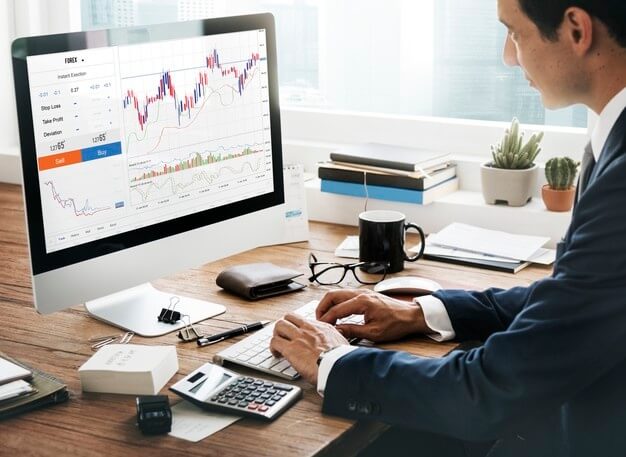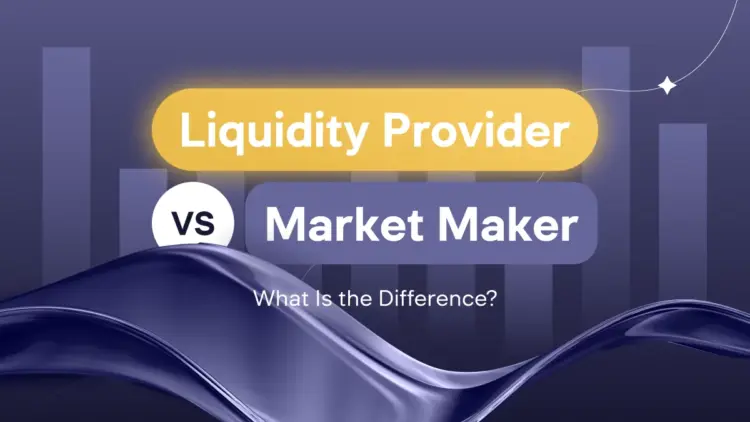
Working with liquidity suppliers is the key to increased buying and selling exercise in any class of monetary devices in any market. Both these systemically essential participants of market relations perform the identical task within the broad sense of their functionality. However, in a narrower sense, there are particular variations between them, which we’ll talk about beneath.
Tier 1 And Tier 2 Liquidity Providers
- Think About it the power to shortly convert an asset into money while causing no important worth changes.
- Market makers take on a big amount of threat by holding inventory and taking positions out there.
- Different market makers now have time to earn cash off the position (perhaps earlier than the unique market maker can).
- In the fast-changing world of cryptocurrency, market makers are really essential for making trading simpler and preserving the market operating easily.
This is particularly advantageous in highly liquid markets, the place the sheer volume of buying and selling and the presence of multiple LPs can result in very competitive spreads. The foundation of efficient trading in monetary markets are liquidity suppliers, or LPs. Unlike market makers who actively construct a market by quoting both buy and sell prices, liquidity providers usually provide asset values relying on the state of the market. Their main aim is to supply the market extra complexity so that huge orders could also be fulfilled without considerably affecting asset values. In extremely regulated markets, similar to inventory exchanges, CLPs are sometimes the popular option because they provide a higher degree of liquidity and are topic to regulatory oversight.
Liquidity suppliers are a new method to add liquidity to a market immediately, while not having a intermediary. Thus, the actual fact thatarbitrageur extra is less than arbitrageur earnings is driven by the fact that the probability of commerce is(exponentially) much less. This, in flip, is as a result of the pool operator drives the mispricing to zero atthe finish of every block, making large mispricings firstly of the next block unlikely.
In today’s monetary markets, liquidity providers and market makers are answerable for ensuring there’s enough cash out there for buying and selling, keeping trading volumes up, and ensuring buying and selling occurs smoothly. Both of those necessary players in the market do related jobs, but there are some variations between them, which we’ll clarify under. Crypto liquidity providers are usually large gamers in the capital markets, boasting entry to extensive resources. They embrace massive networks of monetary institutions and the world’s leading banks. This community varieties a foundational liquidity or pool from which liquidity is drawn to help the market’s needs.
As traders, its essential to know the differences between core Liquidity providers (CLPs) and Market Makers. Both of those entities play a vital role within the monetary markets, however they differ of their strategy to offering liquidity. In this section, nicely take a better have a glance at the introduction to CLPs and Market Makers and discover the vital thing differences between them. Assuming we think about the famous cryptocurrency market in terms of liquidity suppliers and market makers, we will say that liquidity suppliers contrast in one important angle. Conversely, liquidity swimming pools use retailer useful resource coordinates like BTC/USDT, BTC/DAI, and BTC/USDC.

Advantages Of Market Makers
For example, a market maker might find a way to present liquidity in a specific security even when there is liquidity provider vs market maker little or no trading exercise out there. Core liquidity suppliers offer direct entry to the interbank market, which implies that they are in a position to supply deep liquidity and quick execution speeds. Market makers, on the other hand, may be much less liquid, particularly during instances of high market volatility. Merchants ought to think about the liquidity of a specific platform before executing trades, as illiquid markets can lead to slippage and other points.
B-book brokers take the opposite facet of their customer’s trades and don’t move the orders to a liquidity provider. In fact, some Market Makers additionally earn commissions by offering liquidity themselves to their clients’ corporations. What this means is that Foreign Exchange merchants are trading in opposition to the dealer, and any earnings made by the trader equate to a loss incurred by the Foreign Exchange brokerage. The brokerage’s alternatives to make a profit are high so many Foreign Exchange brokerages go for this model. These include setting up buying and selling desks and algorithmic trading which automatically take the opposite facet of customer’s trades. Nevertheless, market makers also have the flexibility to supply liquidity to the market in a method that core liquidity suppliers could not have the flexibility to.
Whether Or Not with market makers or liquidity providers, these relationships are strategic partnerships that might determine the longer term success of a brokerage. Whereas they also contribute to market stability, their impression is commonly extra pronounced in widely-traded, liquid markets. By offering depth, they guarantee smooth trade executions, even during high-volume buying and selling occasions.
For instance, the recent surge of market making in crypto has motivated large banks to invest in this sector, producing slightly extra consistent pricing between forex and crypto industries. Many popular DeFi tasks have taken advantage of liquidity swimming pools to supply customers a wide range of decentralized monetary providers and alternatives. Assumption three is essentially analogous to Assumption 2, and can be equally microfounded by astochastic model, as shown in Instance 4, but doesn’t rely upon that model. The strictinequality assumption merely asserts that a few of the arbitrage profit is captured by themanager.
When the bid is positioned, it should embody a deposit D𝐷Ditalic_D, which have to be a multiple of R𝑅Ritalic_R and should be a minimum of R⋅K⋅𝑅𝐾R\cdot Kitalic_R ⋅ italic_K. Newly placed bids don’t become active instantly, but are delayed by K𝐾Kitalic_K blocks. When both a brand new high bid becomes lively, or the present pool manager’s deposit is depleted, the new high bidder usurps the current pool manager. Since its inception, it has achieved over $5 billion in daily market making volumes and partnered with more than 2,000 institutional traders.
This makes the market busier and more lively, bringing in additional individuals and making it even easier to commerce. LPs provide a extra passive form of participation by funding liquidity swimming pools, permitting for automated market-making through sensible contracts. This methodology enables anybody to contribute to market liquidity and earn passive revenue. Artificial intelligence is today’s market making, facilitating a smooth flow of concluded offers and offering instant liquidity by way of mathematical algorithms. There has positively been a breakthrough within the buying and selling world with automated applications that can process as a lot as a million orders simultaneously. These techniques have expanded the chances for trading methods and have enabled the event of latest technologies to extend the liquidity of the market.
Focused on early-stage initiatives, it’s an excellent selection for companies getting into the Web3 area. Wintermute helps over 350 spot and CFD buying and selling pairs throughout a quantity of platforms, enhancing buying and selling effectivity. Its experience in algorithmic trading, strong trade standing, and expansive market protection make it notably well-suited for giant exchanges and bold crypto initiatives. GSR leverages proprietary trading know-how to align with every exchange’s unique needs and targets, tailoring liquidity methods to make sure an optimal fit for its clients. If you’re seeking a associate with a proven popularity and custom liquidity options, GSR could also be a superb alternative. In different words, Forex merchants are trading against the dealer, and any earnings gained by the trader are offset by the loss that is sustained by the Foreign Exchange brokerage firm.
Implementation details of automated market makers are described inAdams et al. (2020) and Adams et al. (2021). Moreover, Adams et al. (2023b) describes a forthcoming platformfor customizable AMMs. Our white-label expertise simplifies crypto change development, empowering you to construct sturdy relationships with market makers to maintain your business rising. Known for aggressive pricing and dependable execution, it helps each crypto exchanges and over-the-counter (OTC) markets. Its choices cover a variety of cryptocurrencies, together with Ethereum, Bitcoin, Litecoin, and Ripple.




